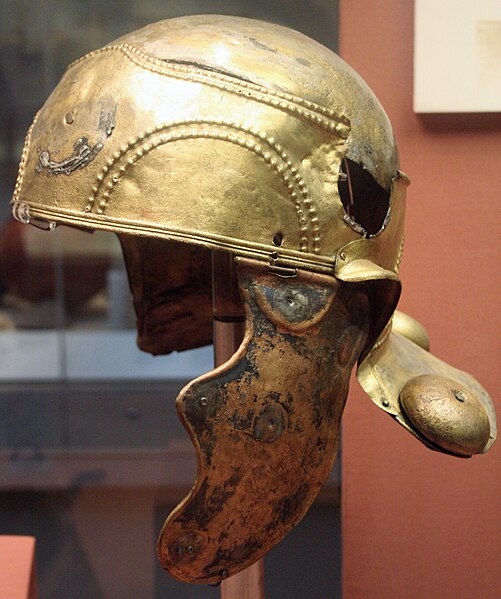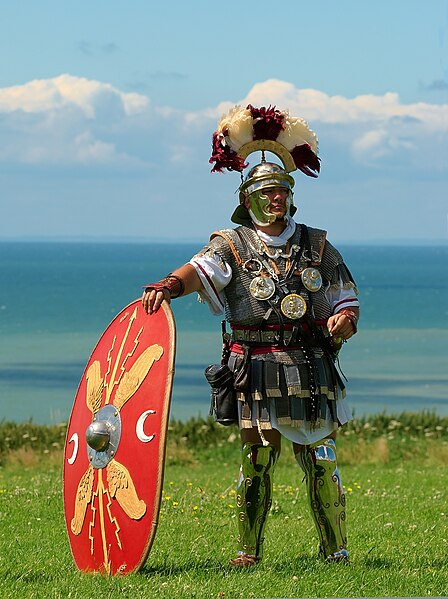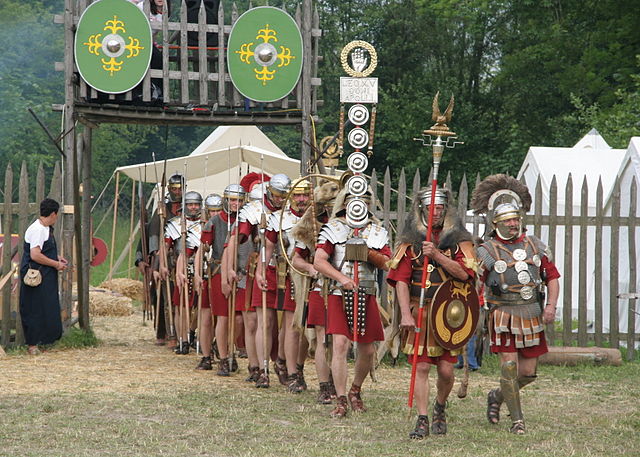The auxilia were introduced as non-citizen troops attached to the citizen legions by Augustus after his reorganisation of the Imperial Roman army from 27 BC. By the 2nd century, the Auxilia contained the same number of infantry as the legions and, in addition, provided almost all of the Roman army's cavalry and more specialised troops. The auxilia thus represented three-fifths of Rome's regular land forces at that time. Like their legionary counterparts, auxiliary recruits were mostly volunteers, not conscripts.
Roman auxiliary infantry crossing a river, probably the Danube, on a pontoon bridge during the emperor Trajan's Dacian Wars (101–106 AD). They can be distinguished by the oval shield (clipeus) they were equipped with, in contrast to the rectangular scutum carried by legionaries. Panel from Trajan's Column, Rome
Etruscan funerary urn crowned with the sculpture of a woman and a front-panel relief showing two warriors fighting, polychrome terracotta, c. 150 BC
The cavalry Witcham Gravel helmet from Cambridgeshire (England), 1st century AD
Tombstone of the Flavian-era eques alaris (ala cavalryman) Titus Flavius Bassus, son of Mucala. A Dansala, (i.e. member of the Thracian Dentheletae tribe), he belonged to the Ala Noricorum (originally raised from the Taurisci tribe of Noricum). He died at age 46 after 26 years' service, not having advanced beyond the lowest rank. Bassus' adopted Roman names, Titus Flavius, indicate that he had gained Roman citizenship, doubtless by serving the required 25 years in the auxilia. The names adopted would normally be those of the emperor ruling at the time of the citizenship award. In this case, they could refer to any of the three emperors of the Flavian dynasty (ruled 69–96),
The Roman legion, the largest military unit of the Roman army, was composed of Roman citizens serving as legionaries. During the Roman Republic the manipular legion comprised 4,200 infantry and 300 cavalry. After the Marian reforms in 107 BC the legions were formed of 5200 men and were restructured around 10 cohorts, the first cohort being double strength. This structure persisted throughout the Principate and Middle Empire, before further changes in the fourth century resulted in new formations of around 1000 men.
Depiction of Roman legionnaires
A historical reenactor in Roman centurion costume
Reenacters portraying Roman legionaries of Legio XV Apollinaris







